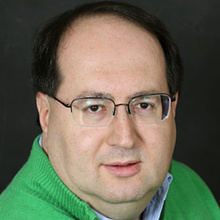At the Oakdale Powerplant in Coralville, Iowa, University of Iowa Technology Institute student research assistants are working on a project to convert woodchipped railroad ties, telephone poles, and other biomass into environmentally friendly sustainable energy.

Using a biomass gasifier, the team from the Ratner Research Group takes bio-based feedstock and converts it into a synthesis gas. The synthesis gas is then used as a fuel source for the powerplant’s boiler operation, which boils water to create steam and power the turbines. The process can replace the consumption of natural gas from the boiler.
“The synthesis gas is much more environmentally friendly compared to natural gas,” said Sazzad Parveg, a graduate research assistant at ITI and a third-year PhD candidate in mechanical engineering in the College of Engineering. “It can produce energy as well as reduce the emissions that come from the use of conventional fossil fuels and, in this case, natural gas fuel.”
This project is one of several aimed at reusing waste products, at times contaminated waste products, and converting them into energy. The hope is to advance the research and scale it to where it can displace a portion of other energy sources.

Sazzad is among several students that work under the mentorship of Albert Ratner, a UI professor of mechanical engineering and ITI faculty affiliate. The group also includes undergraduate research assistants Nicholas Hentges and Nitin Nagarkar and graduate research assistant Rahat Mollick.
Previously the team had focused on burning corn, refuse-derived fuel (RDF), and other municipal solid waste (MSW) in the gasifier to create the synthesis gas. Now Ratner’s group is working on a new project to burn creosoted woodchips derived from shredding old telephone poles and railroad ties.
“Creosote is a carbonous product that is very harmful for the environment,” Sazzad said. “We are exploring a way to sustainably reuse the creosoted woodchips as well as produce energy.”
Typically, creosoted wood chips cannot be burned without releasing harmful chemicals. However, running the woodchips through the gasifier traps the harmful materials in charcoal and allows the wood chips to be burned as a clean source of fuel.

The group’s recent work has included analyzing the gas samples from feeding a combination of corn and creosoted woodchips into the gasifier to assess the effectiveness of this combination in producing energy and reducing emissions. The gasification process also creates a charcoal-like end product known as biochar. This biochar can be used in cement production, water filtration, and for mining rare Earth metals.
“A benefit of this research is that we can reuse the waste as a way of producing energy,” Sazzad said. “Normally waste is dumped into landfills, which is very harmful for the environment, but we can create value from that waste. We are making green fuel, we are reusing waste, and we are making the environment better.”